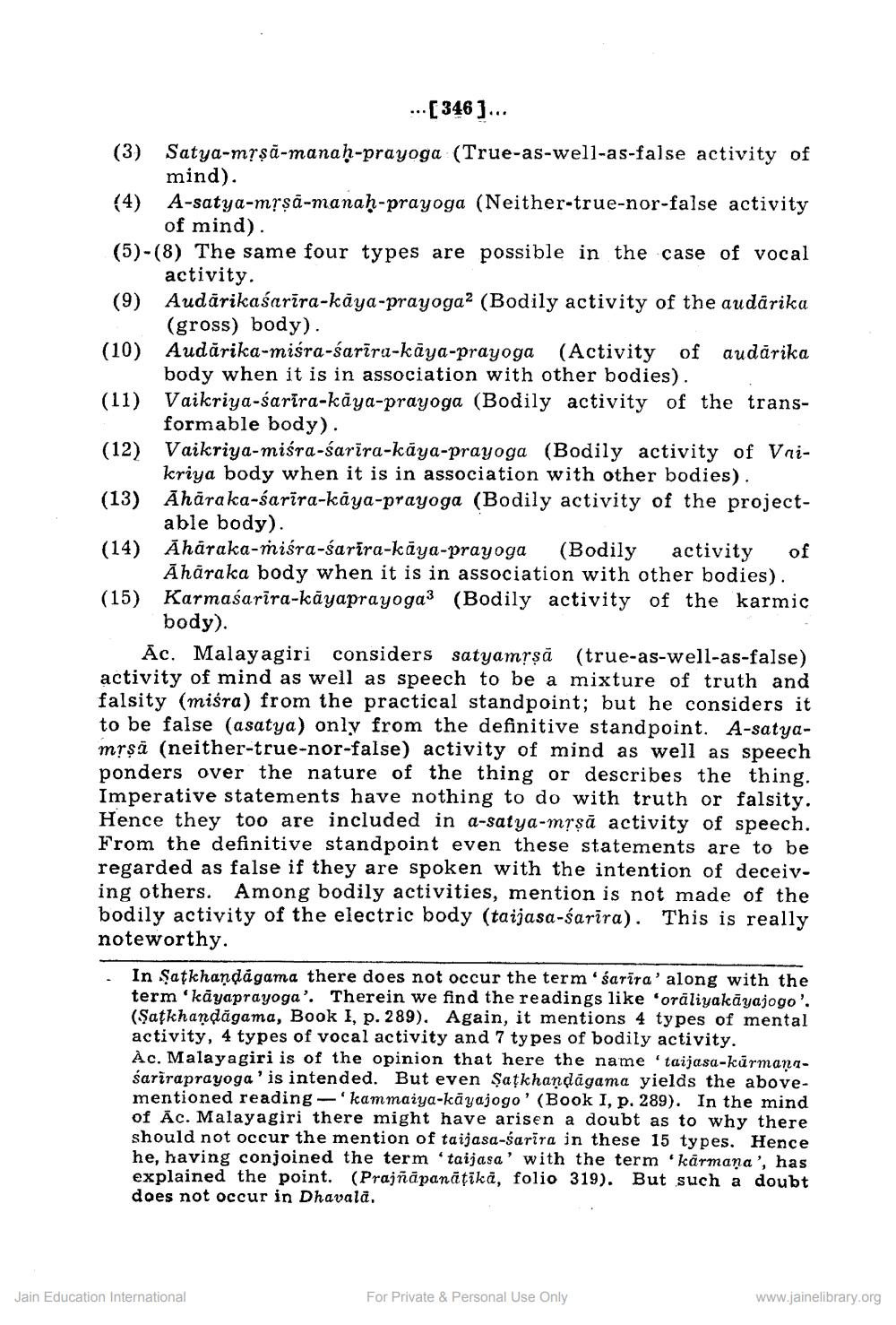________________
...[346]...
(3)
Satya-mṛṣa-manaḥ-prayoga (True-as-well-as-false activity of
mind).
(4) A-satya-mṛṣā-manaḥ-prayoga (Neither-true-nor-false activity of mind).
(5)-(8) The same four types are possible in the case of vocal activity.
(9) Audārikaśarīra-kāya-prayoga2 (Bodily activity of the audarika (gross) body).
(10)
Audărika-miśra-śarīra-kaya-prayoga
(Activity of audărika
body when it is in association with other bodies). (11) Vaikriya-śarīra-kāya-prayoga (Bodily activity of the trans
formable body).
(12) Vaikriya-miśra-sarira-kaya-prayoga (Bodily activity of Vaikriya body when it is in association with other bodies). (13) Aharaka-sarira-kaya-prayoga (Bodily activity of the project
able body).
(14) Aharaka-miśra-śarīra-kaya-prayoga
(Bodily activity of Aharaka body when it is in association with other bodies). (15) Karmasarira-kayaprayoga3 (Bodily activity of the karmic
body).
Ac. Malayagiri considers satyamṛṣă (true-as-well-as-false) activity of mind as well as speech to be a mixture of truth and falsity (misra) from the practical standpoint; but he considers it to be false (asatya) only from the definitive standpoint. A-satyamrsa (neither-true-nor-false) activity of mind as well as speech ponders over the nature of the thing or describes the thing. Imperative statements have nothing to do with truth or falsity. Hence they too are included in a-satya-mṛṣă activity of speech. From the definitive standpoint even these statements are to be regarded as false if they are spoken with the intention of deceiving others. Among bodily activities, mention is not made of the bodily activity of the electric body (taijasa-sarira). This is really noteworthy.
In Satkhandagama there does not occur the term 'sarira' along with the term 'kayaprayoga'. Therein we find the readings like 'oraliyakayajogo'. (Satkhandagama, Book I, p. 289). Again, it mentions 4 types of mental activity, 4 types of vocal activity and 7 types of bodily activity. Ac. Malayagiri is of the opinion that here the name 'taijasa-kārmaṇasariraprayoga' is intended. But even Saṭkhandagama yields the abovementioned reading-'kammaiya-kayajogo' (Book I, p. 289). In the mind. of Ac. Malayagiri there might have arisen a doubt as to why there should not occur the mention of taijasa-sarira in these 15 types. Hence he, having conjoined the term 'taijasa' with the term 'karmana', has explained the point. (Prajñāpanāṭikä, folio 319). But such a doubt does not occur in Dhavala.
Jain Education International
For Private & Personal Use Only
www.jainelibrary.org




